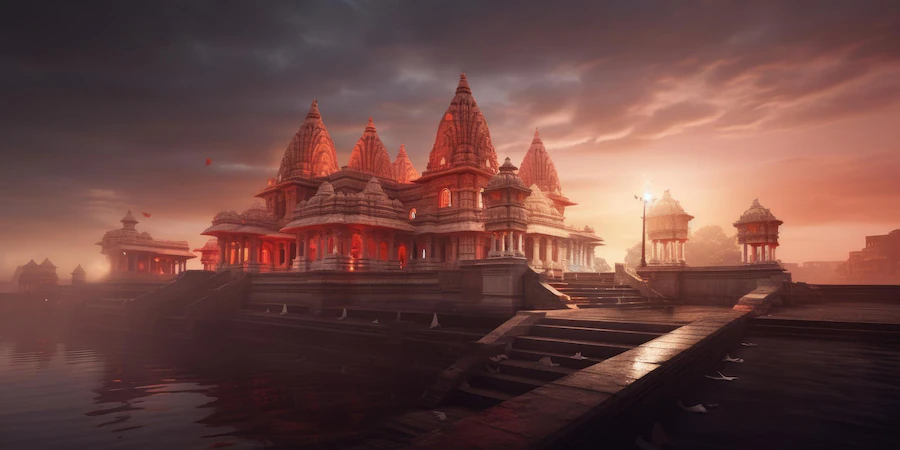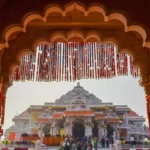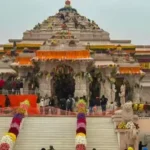The Shree Ram Mandir in Ayodhya is a monumental symbol that transcends religious and cultural boundaries. It stands as a testament to India’s rich historical tapestry, spiritual heritage, and socio-political evolution. This comprehensive exploration covers the temple’s historical context, the origins and escalation of its associated disputes, the intricate legal battles, the ongoing construction process, and its profound implications for tourism and local development.
Introduction: A Symbol of Faith and Legacy
The Shree Ram Mandir is not merely a structure of religious significance but a powerful emblem of faith and historical continuity. Its construction represents the culmination of decades of socio-political and legal struggles, encapsulating a narrative that is deeply embedded in India’s collective consciousness. As the birthplace of Lord Ram, the temple site holds immense spiritual value for millions of Hindus worldwide, embodying a legacy of devotion and cultural heritage that stretches back over thousands of years.
Table of Contents
The Historical Context of Ayodhya
Ayodhya, located in the northern Indian state of Uttar Pradesh, is renowned for its historical and religious significance. According to Hindu mythology, it is the birthplace of Lord Ram, an incarnation of Vishnu, and the central figure in the ancient epic, the Ramayana. The city’s importance is reflected in its designation as one of the seven Moksha-puris, cities believed to provide liberation from the cycle of birth and rebirth. Ayodhya’s historical and mythological roots are further enriched by archaeological findings, including ancient temples and inscriptions that highlight its long-standing religious significance.
The city has been a prominent center of Hindu pilgrimage for centuries. Its spiritual significance is further emphasized by its numerous temples, ghats, and sacred sites, which have attracted devotees and scholars alike throughout history. The architectural and cultural heritage of Ayodhya underscores its role as a key site in Hindu history and spirituality.
Origins of the Dispute
The origins of the Ram Mandir dispute trace back to the early 16th century, when the Mughal Emperor Babur ordered the construction of the Babri Masjid in 1528. This mosque was erected on a site believed by many Hindus to be the birthplace of Lord Ram. The mosque’s construction was contentious, as historical accounts and local legends suggest that it may have been built on the ruins of a pre-existing Hindu temple dedicated to Ram.
Archaeological investigations have uncovered evidence suggesting the presence of a Hindu temple beneath the mosque. Findings from excavations conducted by the Archaeological Survey of India (ASI) have revealed remnants of a large structure with Hindu architectural elements, which some interpret as evidence of a temple that predated the mosque. These discoveries have fueled the long-standing dispute over the site, highlighting the complex interplay of historical, religious, and cultural factors.

The Escalation of the Conflict
Lorem ipsum dolor sit amet, consectetur adipiscing elit. Ut elit tellus, luctus nec ullamcorper mattis, pulvinar dapibus leo.
The Ram Mandir issue gained national prominence in the late 20th century as the Ram Janmabhoomi movement gained momentum. This movement, led by various Hindu nationalist organizations, sought to reclaim the site for the construction of a temple dedicated to Lord Ram. The controversy surrounding the site intensified with mass mobilization and political agitation, culminating in the demolition of the Babri Masjid on December 6, 1992, by a large group of Hindu activists.
The demolition was a watershed moment, sparking widespread communal violence and riots across India. The ensuing violence resulted in significant loss of life and property, highlighting the deep-seated tensions between different religious communities. The Indian government responded by instituting various commissions and inquiries to investigate the incident and address its aftermath.
The Legal Battle
The legal battle over the Ram Mandir site has been one of the most protracted and complex in Indian judicial history. It began with petitions filed in the early 1950s seeking permission for Hindu worship at the disputed site. Over the decades, numerous legal proceedings and court cases addressed questions of ownership, religious rights, and historical claims.I
n 2010, the Allahabad High Court delivered a landmark judgment dividing the disputed land into three parts: one-third for the Hindu parties, one-third for the Muslim parties, and one-third for the Nirmohi Akhara, a Hindu sect. This decision aimed to provide a balanced resolution but was met with mixed reactions and further legal challenges.
The Supreme Court of India took up the case, and in November 2019, delivered a unanimous verdict awarding the entire disputed land to the Ram Janmabhoomi Trust for the construction of the Ram Mandir. The court’s decision also included provisions for the allocation of an alternate site for the construction of a mosque in Ayodhya. This ruling was hailed by many as a step towards resolving a long-standing conflict and restoring peace, while also raising questions about the future management of religious and communal relations in the region.

The Construction of the Temple
Construction of the Shree Ram Mandir commenced following the Supreme Court’s verdict. The design, created by architect Chandrakant Sompura, incorporates traditional Hindu architectural styles, including intricate carvings, ornate sculptures, and a grand central dome. The temple’s design is intended to reflect the grandeur of ancient Hindu temples while utilizing modern engineering techniques to ensure stability and longevity.
The ceremonial laying of the foundation stone took place on August 5, 2020, with Prime Minister Narendra Modi presiding over the event. The ceremony included Vedic rituals and was attended by numerous dignitaries, religious leaders, and devotees. The construction process involves the use of high-quality materials, including white marble and sandstone, sourced from various parts of India.
The temple’s construction is expected to be completed in several phases, with the initial focus on erecting the main structure and subsequent efforts dedicated to finishing the interiors and surrounding areas. The project aims to create a grand and aesthetically pleasing edifice that honors Lord Ram and serves as a focal point for spiritual and cultural activities.
Cultural and Spiritual Significance
The Shree Ram Mandir is anticipated to play a pivotal role in Hindu devotional life and cultural practices. As a major pilgrimage destination, it will attract millions of devotees and tourists from across India and around the world. The temple’s significance extends beyond religious worship; it is expected to serve as a center for spiritual education, cultural events, and community activities.
The architectural design of the temple reflects traditional Hindu aesthetics, with elaborate carvings and sculptures depicting various deities and mythological scenes. The temple will feature spaces for prayer, meditation, and religious ceremonies, as well as facilities for visitors and pilgrims. The Shree Ram Mandir is poised to become a symbol of cultural pride and spiritual heritage, celebrating the enduring legacy of Lord Ram and Hindu traditions.
Socio-Political Implications
The Ram Mandir issue has had profound socio-political implications for India. It has influenced electoral politics, with various political parties leveraging the issue to mobilize support and shape public discourse. The resolution of the dispute through the Supreme Court’s verdict has been seen as a significant milestone in addressing historical grievances and promoting national unity.
However, the construction of the temple also raises important questions about communal harmony and the management of religious diversity. The Indian government and various organizations have emphasized the need for peace and dialogue, encouraging a spirit of inclusivity and mutual respect as the temple is built and inaugurated.

























Tourism Facts and Future Prospects
1.Expected Visitor Numbers
Lorem ipsum dolor sit amet, consectetur adipiscing elit. Ut elit tellus, luctus nec ullamcorper mattis, pulvinar dapibus leo.The Shree Ram Mandir is expected to become one of India’s most visited religious sites. Preliminary estimates suggest that the temple could attract millions of visitors annually, including both domestic and international tourists. This influx of visitors will significantly boost Ayodhya’s profile as a major pilgrimage and tourism destination.
2. Economic Impact
The temple’s construction and operation are anticipated to have a substantial economic impact on the region. The influx of tourists will create job opportunities in various sectors, including hospitality, transportation, and retail. Local businesses, such as hotels, restaurants, and shops, are likely to experience increased demand, contributing to the city’s economic development.
3. Tourism Infrastructure
To accommodate the expected increase in visitors, significant upgrades to Ayodhya’s tourism infrastructure are underway. The Ayodhya Development Authority is focusing on expanding transportation facilities, improving road networks, and developing amenities to enhance the visitor experience. Efforts are also being made to ensure adequate security and safety measures for tourists.
4. Cultural and Heritage Attractions
Beyond the Ram Mandir, Ayodhya offers a range of historical and cultural attractions. Notable sites include the Hanuman Garhi temple, known for its architectural grandeur, and the Kanak Bhawan temple, renowned for its historical significance. The Saryu River ghats, where rituals and ceremonies are performed, also attract visitors. These attractions, along with the Ram Mandir, will provide a comprehensive cultural experience for tourists.
5. International Interest
Lorem ipsum dolor sit amet, consectetur adipiscing elit. Ut elit tellus, luctus nec ullamcorper mattis, pulvinar dapibus leo.The global significance of the Shree Ram Mandir is expected to draw international tourists, particularly from countries with substantial Hindu communities, such as Nepal, Bangladesh, Sri Lanka, and those in the Indian diaspora. This international interest will foster cultural exchange and enhance global awareness of Ayodhya’s spiritual heritage.

6. Spiritual Tourism
The temple’s role as a center for spiritual tourism will likely attract individuals seeking religious and spiritual experiences. The Shree Ram Mandir’s facilities and programs are expected to cater to a wide range of spiritual practices and interests, including meditation, religious education, and cultural events.
7. Environmental and Cultural Preservation
Balancing tourism development with environmental and cultural preservation is a key focus for the authorities. Sustainable tourism practices will be implemented to protect Ayodhya’s heritage and natural resources. This includes measures to manage waste, conserve local ecosystems, and preserve the city’s historical and cultural integrity.
Final Thought: An Symbol of Unity and Religion
The Shree Ram Mandir in Ayodhya represents more than just a religious edifice; it is a monument to India’s rich cultural and spiritual heritage. Its construction marks the resolution of a long-standing historical and legal conflict, symbolizing a new chapter in the city’s and the nation’s story.
The temple’s significance extends beyond its religious value, embodying a synthesis of historical legacy, cultural pride, and spiritual aspiration. As a major pilgrimage site, it is poised to attract millions of devotees and tourists from around the world, boosting local and national economies and promoting cultural exchange.
Ayodhya’s transformation into a global spiritual destination will likely be accompanied by challenges, including the need to balance development with preservation and manage communal relations sensitively. However, the temple’s impact on fostering unity, understanding, and respect across diverse communities will be a defining feature of its legacy.
In essence, the Shree Ram Mandir is not just a place of worship but a symbol of faith, resilience, and reconciliation. It stands as a testament to the enduring power of belief and the importance of bridging historical divides to build a more inclusive future. As the temple continues to take shape, it will undoubtedly play a pivotal role in shaping the spiritual, cultural, and economic landscape of Ayodhya and beyond, embodying the rich tapestry of India’s historical and cultural journey.













The author does a great job of not only detailing the historical and spiritual significance of the temple but also addressing the complex socio-political and legal aspects that have shaped its journey. The balance between cultural insights and the practical implications for tourism and local development adds depth to the narrative. I especially appreciate the way the article connects the temple’s past with its future potential, making it clear that this is more than just a place of worship—it’s a symbol of India’s rich heritage and ongoing evolution.